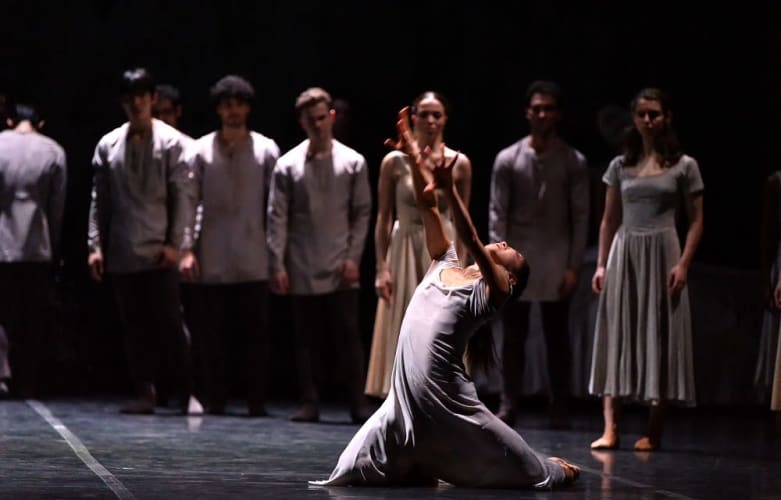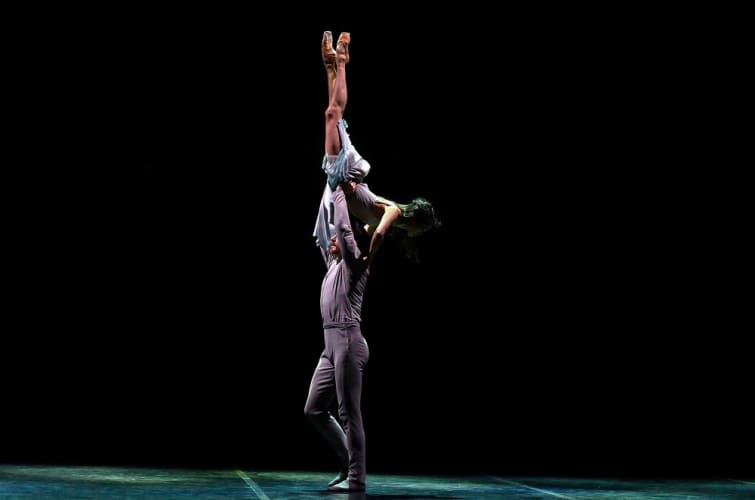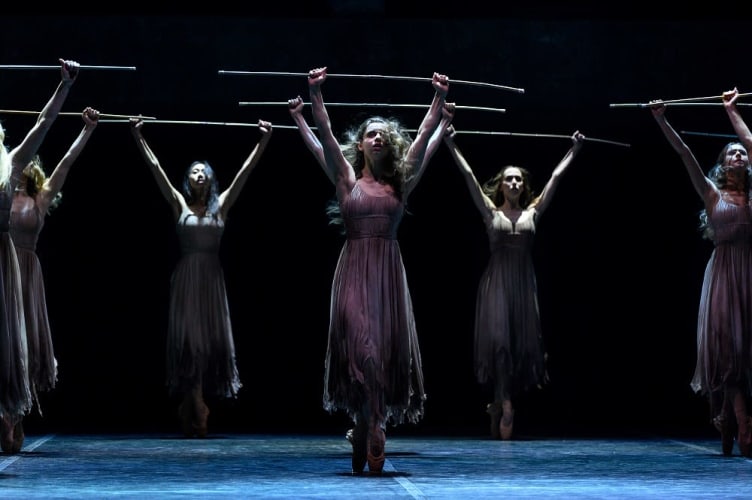Although it premièred in 2016, Akram Khan's Giselle anticipates, with frightening accuracy, the social divisions between the elite and the underclass which became apparent during the COVID pandemic, particularly the shameful Partygate scandal.
Ballet, at its best, conveys a narrative without the need for dialogue. It is apparent from the opening moments Akram Khan's Giselle fulfils this requirement. A community of redundant factory workers strain against an unyielding barrier desperate to gain entry to the privileged area from which they are denied access. This ritual has been going on so long their hands have left imprints on the wall.
Albrecht (James Streeter), one of the elite Landlords, is slumming it among the dispossessed, and forms a relationship with factory worker Giselle (Erina Takahashi). When the Landlords condescend to visit the workers, Albrecht tries to keep the relationship secret and when it is revealed abandons Giselle to face the anger of her community. There is no rest for the weary in this merciless world as a lifeless Giselle is condemned to a Ghost Factory where, in the manner of the Greek Furies, her workmates insist she take vengeance on Albrecht.
Aram Khan's Giselle is full of beguiling contradictions. There are no props—the machinery upon which the workers labour is suggested by the movements of the dancers. The ensemble glide around the stage en pointe with the precision of smoothly functioning machinery. Yet the dancing is so organic as to imply the workers have formed a symbiotic relationship or merged with the machines. In the second act, this impression is even stronger as the Ghost Workers are tethered like beasts of burden with bits in their mouths. Although Vincenzo Lamagna’s sound design is full of the harsh clang of metal on metal or the hoot of factory sirens, there is also an Aboriginal undertone to reflect the tribal nature of the community.
Khan’s choreography does not conform to classical ballet norms. The workers, free from restraint, gallop horse-like around the stage. When Giselle realises the extent to which she has been betrayed by her lover, her limbs seem to rebel in shock, twisting in unnatural poses.
The elite are presented as alien beings as if from the movie Close Encounters of the Third Kind. The impenetrable wall opens, and they regally descend in a blaze of light wearing ridiculously impractical clothing. The entrance of the vengeful Queen of the Wills (Emma Hawes) is in the manner of a character from an Eastern horror movie: long hair obscuring her face and dragging Giselle’s body onto the stage.
An atmosphere of doom hangs over the ballet. Mark Henderson’s lighting is relentlessly gloomy, never rising above twilight. The stunning granite wall set from Tim Yip is unforgiving and oppressive—a stark reminder to the workers to know their place. Giselle’s willingness to forgo vengeance does not lead to the redemption of Albrecht but leaves him an outcast, isolated in shame.
Akram Khan's Giselle is such an unflinching display of social division, it ought to be a depressing experience, but the sheer quality of the ballet instead leaves the audience in stunned admiration.





